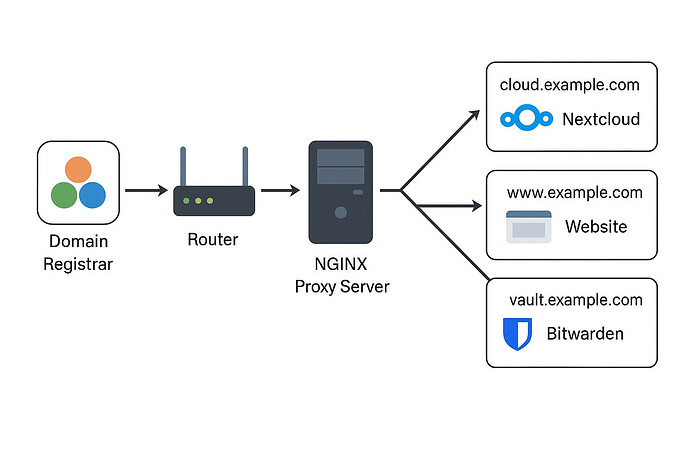Hi,
I totally understand your frustration — I’ve been there too.
Personally, I haven’t tested Nextcloud AIO on Windows Server, so I can’t fully assess how it behaves in that environment.
I run everything on a self-hosted Proxmox server where I have multiple Ubuntu Server VMs.
One of them runs Nextcloud AIO, and it’s been working flawlessly for almost 3 years.
 Public IP vs. Cloudflare/Tailscale
Public IP vs. Cloudflare/Tailscale
I pay for a public IPv4 address specifically to avoid services like Cloudflare and Tailscale, because I’ve had issues with both in the past.
In particular, Cloudflare caused problems with syncing large files — uploads would either fail or endlessly loop. Cloudflare has certain limits and aggressive behavior that doesn’t always play nicely with protocols like WebDAV, especially over tunneled reverse proxies.
 My Working Setup
My Working Setup
Here’s the model I use that has been rock solid:
nextcloud.mydomain.sk
↓
paid public IP address
↓
router (forwarding ports 443 and 80)
↓
NGINX proxy server (running in a VM on my LAN)
↓
Nextcloud AIO (separate VM on same LAN)
- SSL certificates are handled automatically via Let’s Encrypt on the NGINX proxy
- Syncing works perfectly across desktop, mobile, and WebDAV
- No HTTPS issues, no remote access problems, no outages
Just yesterday I helped another user set up a similar reverse proxy setup — here’s the thread if you’re interested:
![]() Can't make reverse proxy work between public Apache server and local Nextcloud server
Can't make reverse proxy work between public Apache server and local Nextcloud server
 Suggestions
Suggestions
- If you’re planning to share access with family members, especially non-technical users, I’d really recommend avoiding Cloudflare Tunnel.
- If AT&T won’t let you open ports 80/443 at home, maybe look into hosting a small VPS or VM with a provider that gives you a public IP.
- If you continue using Cloudflare, make sure to disable Rocket Loader, caching, compression, and other “optimizations” for the Nextcloud subdomain — these often cause trouble.
- Also double-check your proxy headers (
X-Forwarded-For,X-Real-IP, etc.) — misconfigured headers often lead to weird behavior with AIO behind reverse proxies.
If you ever want help switching to a direct reverse proxy setup (without Cloudflare), I’m happy to walk you through it. It can absolutely be made to work reliably even from home — if you can get basic port forwarding set up.
But you can follow my settings as mentioned above at URL.
